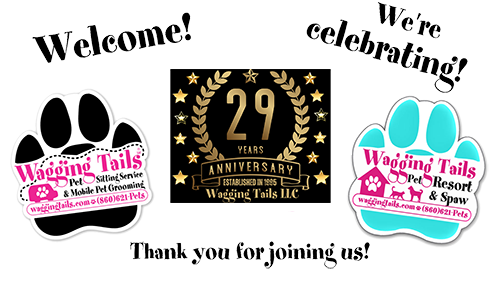Bathing and washing, in general, can be quite a traumatic process for many canines and perhaps more so for those who are prone to anxiety. This means that grooming is not only uncomfortable but also dangerous for the dog, especially if the dog is anxious, which may lead to fear, agitation, and aggression. When getting a dog, people must always learn about their breed and potential health issues, so a dog owner should know how to tell if their dog is nervous during grooming and what to do about it.
Here are five constructive tips for handling anxious dogs during grooming sessions:
Let Them Grow Comfortable with Grooming from an Early Age
Training your puppy to accept grooming and handling is essential as this will help them to adapt quickly at an early age. Experts advise that it is best to accustom the puppy to touching its paws, brushing them, and checking for oral cavity and ears regularly. This desensitizes them at a young age and ensures that they do not react violently in these scenarios. Also, let them have snacks during and after grooming sessions so they will not have any negative emotions towards grooming.

Select a Preferential, Non-Challenging Environment
Try to groom your anxious dog in a comfortable place or in an environment that has little stimulation for your pup. Loud or overly crowded places like a pet store can exacerbate their condition. Bathe them at home or look for a small grooming parlor that will not overwhelm your dog. The familiarity of home or some other less tense environment can bring them more comfort. Also, consider the exact physical location every time so your dog grows accustomed to the environment.
Mention to your groomer to be gentle or go slowly when grooming your dog
Let any new groomers know about the anxious behavior of your dog and ask them to gradually introduce the grooming process. It will help if you do not shout or make any sudden movements known to cause reactions in the pup. Allow your dog to roam and investigate the surroundings on his or her own at first while providing them with some tasty incentives and verbal encouragement. This will make them wish to stay for some time and versus being forced into the grooming section as they are handled by the groomers. Slowness at the beginning is helpful as it helps avoid overreactions due to fear that may come up later.
Ensure calming aids are given, if needed
If your dog is highly anxious and the anxiety cannot be rectified even with desensitization, consult with your vet regarding using calming equipment for grooming. Modern principal methodology contains several safe anti-anxiety drugs, calming sprays, and supplements designed for dogs. They should be given before appointments as recommended to produce a calming result. This helps to lessen the tension considerably for exceptionally nervous dogs and, therefore, helps to make the process of grooming a much less traumatic experience for the animal. However, it is advised to always consult with your vet before choosing one.

If you see the first sign of fear, observe your pet; try to make him/her feel comfortable
Since dogs are in a position to express themselves as human beings do, be keen on signs of fear or anxiety during grooming. Some common signs of stress include rigidity of the dog’s body, tail tuck, heavy breathing, shaking, averting of the eyes, sudden episodes of aggression, and hiding, among others. If you observe any of these reactions, then you should pause what you are doing and let the dog rest for some time so that it can calm itself down again. It is suggested that more attention be paid to the manifestation of fear rather than simply avoiding it. This helps to prevent building the dog to a stage where he will panic during grooming.
Summary
As with any dog, it can take a lot of patience, encouragement, and time to assuage an anxious dog. Even though it is time-consuming to get the dog bathed, brushed, and clipped, it is always wise to work slowly to help the anxiety-stricken animal ease into the process. In addition, it should be underscored that if the owner tries to advance the process too quickly, the dog might feel threatened and respond with aggression and biting.
Teaching force-free handling in combination with requests for calming aids, if needed, prepares the dog for success. Ensure these sessions are not very formal, ensure your dog feels comfortable around you, and pay attention to his signals. Even terrified dogs will be able to learn how to endure grooming in a better, calming way with the suggestions mentioned here.
